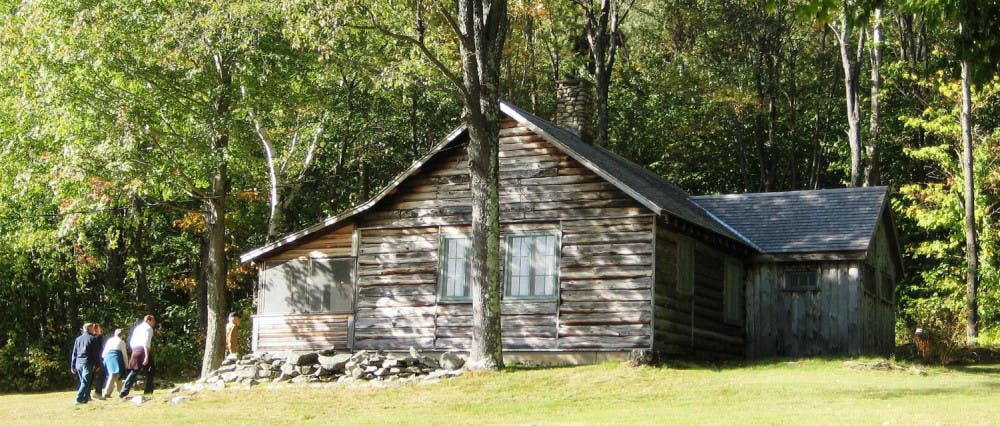While some see opportunity for self-reflection amidst nature and solitude among Vermont’s idyllic landscapes , others see entirely different opportunities. This December marks the ten-year anniversary of the destruction of Robert Frost’s historic cabin in Ripton. In 2007 a group of high school students threw a party at the cabin, which is located on a plot of land that now belongs to Homer Noble Farm.
According to current Public Safety Investigator and former Police Sergeant Lee Hodsden, the idea for the party came from a seventeen-year-old employee of the college, who asked an older friend to buy five thirty-racks of beer for the occasion. Word spread, and close to fifty teenagers arrived at the cabin, colloquially called “Frost Farm,” on a cold winter evening. As the night progressed, the party grew out of control, resulting in broken furniture, urine and vomit on the carpets and an estimated $10,000 of damage.
Hodsden responded to the case after a hiker called the police about the damage when passing through the farm.
According to Hodsden, the students had shown a fair amount of determination in getting to the cabin: they had parked at the bottom of the hill by the Robert Frost Interpretive Trail and walked all the way up to the cabin through the snow. In the frigid winter weather, one vehicle had gotten stuck in a ditch near the Interpretative Trail and was left behind by its owner. Hodsden ran the license plate number and linked it to a high school student. Through that individual, Hodsden was able to identify many of the people who had attended the party and pieced together what had happened. Nearly thirty teens were charged with trespassing.
According to a Washington Post article published at the time, the prosecutor in the case had an unusual idea for a potential punishment, which the judge supported. They contacted Jay Parini, a professor of English and creative writing, and asked if he would teach the partiers a course on Frost’s poetry.
Parini, who himself had lived in the cabin when he taught at Bread Loaf in the summer, felt a personal stake in the issue and accepted the job.
“I remember being quite upset when I heard, first on the radio, that the Frost House had been overrun by high school kids who had been partying there and caused quite a bit of damage and nearly burned the place down,” he said.
Every student accepted the deal and enrolled in Parini’s special course. Parini said he met the students for several weeks in a public building and tried to get the students to reflect on how Frost’s poetry may be applicable to their own lives. For instance, one of Parini’s lessons involved an analysis of “The Road Not Taken.”
“[I] suggested to them that they stood at a crossroad in their lives, and that this is not uncommon, and that we’re always making choices that will affect us, often in ways we can’t foresee,” he said.
Not everybody in the community was on board with this non-traditional sentence. Edward Brown, an innkeeper at Bread Loaf during the School of English, had his doubts about the efficacy about the punishment. “I, for one, didn’t like the idea of having writing as a punishment because it taught them that writing is something you do when you’re bad or wrong,” he said. Brown also noted that the cabin’s destruction led to fundraising efforts by the college and Paul Muldoon to endow the property and help restore it.
Despite some pushback, however, Parini said that he thinks that this restorative justice practice was effective. He notes that before his class, some of the perpetrators did not know who Robert Frost was. He also remembers being surprised by the amount of press coverage his class received at the time. “I was a bit startled by the presence of reporters, who sat at the back of the room and spread the story. On the Associated Press wire it went around the world,” he said. “I think it was a big human interest story. Even the New York Times ran an editorial about this event.”
For Parini, though, his role in teaching these students about the importance of Frost and his poetry was personal.
“For me, the Frost House and cabin on the property are a sacred place. I wrote a biography of Frost, and continue to read and teach Frost every year,” he said. “I live in his poetry, which informs the world around me here in Vermont. So the fact that Frost lived here, and was part of Middlebury, where I’ve been teaching for nearly four decades, means a great deal to me.”



